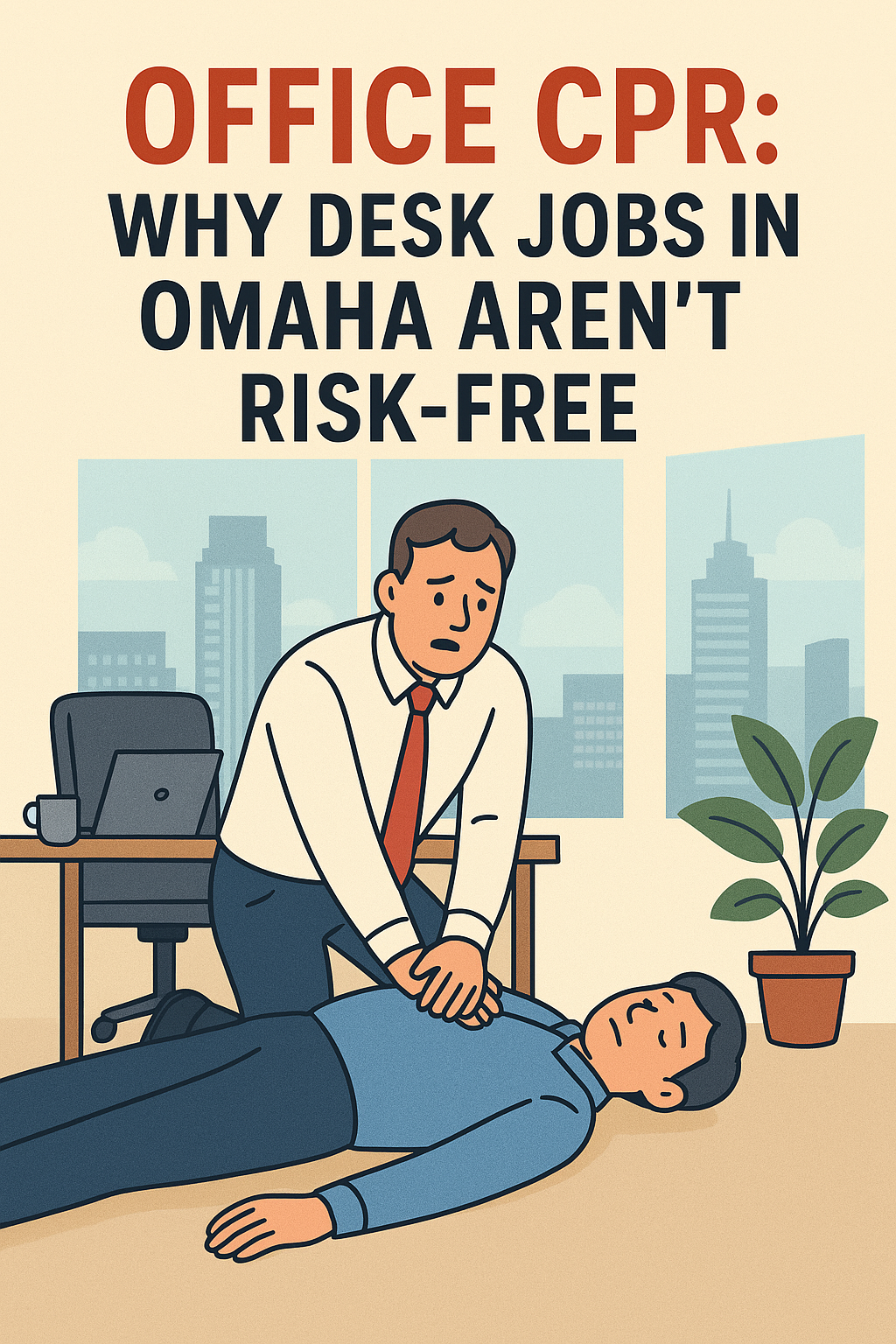When most people think of CPR, they picture a lifeguard at Lake Zorinsky or a first responder at the scene of a car accident—not someone in business casual slumped over a desk on the 10th floor of an office building in downtown Omaha.
But here’s the truth: medical emergencies, including sudden cardiac arrest, can happen anywhere—including the office. And they don’t care whether you’re wearing a uniform, a suit, or yoga pants.
The Hidden Health Risks of a Desk Job
Omaha is home to thriving industries—finance, insurance, logistics, tech startups—all of which keep thousands of professionals parked in front of screens for 8 to 10 hours a day. And while these jobs may not involve heavy machinery or construction hazards, they’re not without risk.
Sedentary lifestyles, chronic stress, poor posture, and limited physical activity are all common among office workers. Unfortunately, these factors also contribute to heart disease and other conditions that can trigger sudden cardiac arrest—even in younger adults.
Why Workplace CPR Training in Omaha Matters
According to the American Heart Association, nearly 90% of people who suffer cardiac arrest outside a hospital do not survive. But here’s the good news: immediate CPR can double—or even triple—their chance of survival.
Here’s the catch: “immediate” means within minutes, not when EMTs arrive. In Omaha, EMS response times average 7–8 minutes. But brain damage can begin in just 4 minutes without oxygen. That crucial window? It’s up to coworkers to act.
That’s why CPR and AED training in Omaha offices is more than a nice-to-have—it’s a lifesaving necessity.
How Omaha Offices Can Prepare Right Now
Omaha is a community that shows up for each other—whether it’s flood relief, food drives, or Husker tailgates. It’s time we do the same for workplace safety.
Here’s how your office can get started:
1. Get CPR Certified
Partner with local providers like Heartland Safety and Wellness, to host on-site CPR and AED training. Empower your employees to act quickly and confidently in an emergency.
2. Install and Maintain AEDs
Automated External Defibrillators (AEDs) are user-friendly, voice-guided devices that can restart a heart. Every office—especially those in high-rise buildings or with large teams—should have at least one. Make sure it’s clearly marked, easily accessible, and regularly inspected.
3. Run Emergency Drills
Just like fire drills, CPR and cardiac emergency drills help employees know their roles when seconds count. Who calls 911? Who starts compressions? Who retrieves the AED?
4. Promote a Heart-Healthy Culture
Encourage stretch breaks, walking meetings, standing desks, and wellness incentives. A healthier workforce isn’t just happier—it’s better protected against sudden health crises.
Real People, Real Emergencies—Even at a Desk
The reality is that someone in your building may be at high risk—and not even know it. It could be a colleague with a family history of heart disease. A client with high blood pressure. Or you.
This isn’t alarmist. It’s reality. From Aksarben to West Dodge, from Old Market loft offices to home offices in Dundee, Omaha workers are just as vulnerable to cardiac events as anyone else. And they deserve the same level of emergency readiness.
Let’s Make Omaha’s Offices CPR-Ready
Whether you’re in HR, facilities, or leadership, investing in CPR and AED training in your workplace could mean the difference between life and death.
Let’s build a culture of preparedness across Omaha—because every heartbeat matters, even at a desk.

